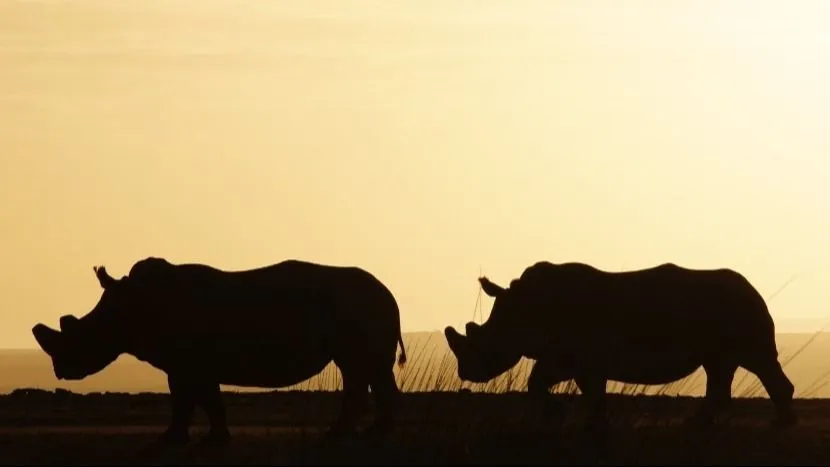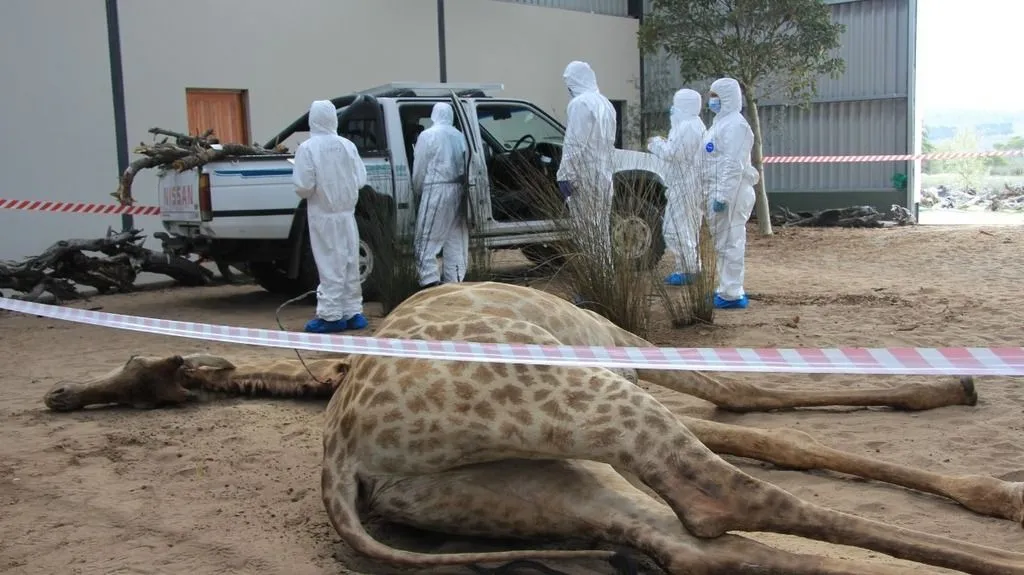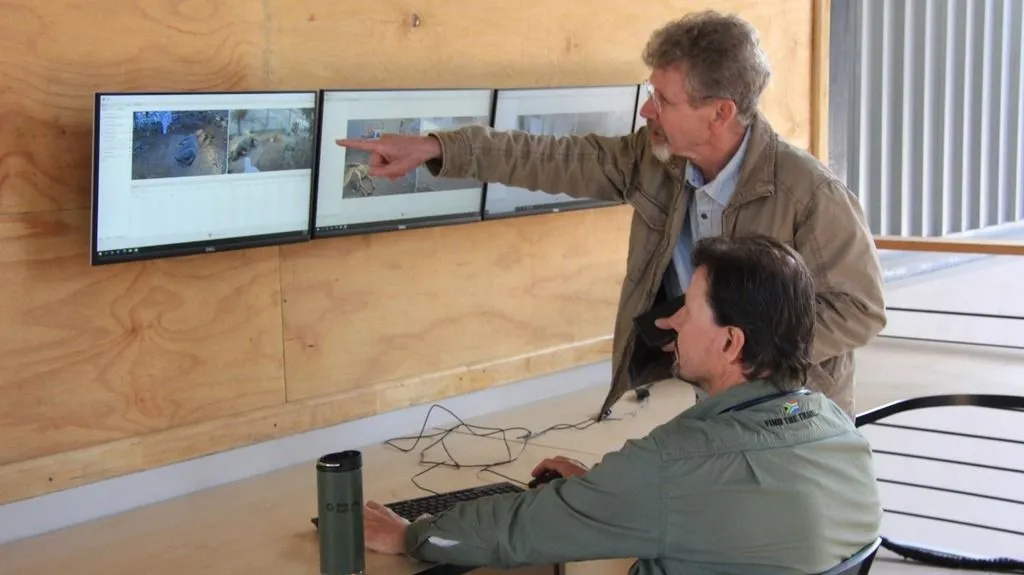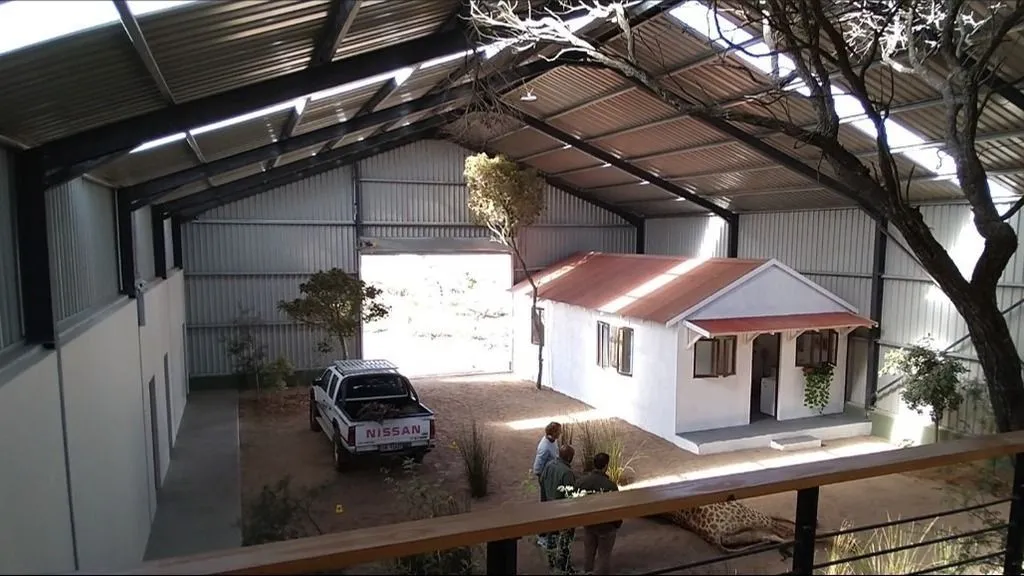April 6, 2023
Combatting wildlife crime using cutting edge video technology
In May 2022, our CEO Lucas Noldus and VP Marketing Arjan Veenboer attended the opening of the Wildlife Forensic Academy (WFA) in Buffelsfontein, South Africa, one hour north of Cape Town.

Wildlife Forensic Academy (WFA) founder Andro Vos and his team took a broad group of stakeholders on a tour through their new facility. We were invited to this grand opening because we are a proud partner of the WFA. So, how are things going ten months later? Time to talk to Andro Vos about the developments and experiences since the opening in 2022.
What is the Wildlife Forensic Academy? History
The WFA was founded by Andro Vos. Andro has over 20 years of experience in human crime scene investigation from his work at the Netherlands Forensic Institute (NFI). During a visit to South Africa he came into contact with an entirely different kind of crime scene. He was invited to the Kruger Park to learn about wildlife crime. There Andro witnessed the cadaver of a poached rhinoceros. The whole experience stuck with him and he decided that he needed to do something to stop this rampant wildlife poaching.
Wildlife crime in South Africa
Wildlife crime is the organized poaching and selling of animals, and is unfortunately one of the biggest illegal businesses in terms of revenue (30 billion dollars worldwide annually). It also facilitates many other types of crime through its distribution chain. Animals are traded for weapons and drugs, and they can carry zoonotic diseases. Furthermore, poaching causes the local ecosystems (where animals are taken and from where they are shipped) to be disturbed.
When hearing about wildlife crime, one might think only about killed rhinos and elephants. But actually, Andro told us that most poaching is actually done at sea. The poaching of abalone for consumption is a major problem in South Africa especially.
Combatting poaching through the legal system
Andro Vos says that, “a major problem in combatting poaching is getting the case through the legal system. A case doesn’t go to conviction without evidence, and gathering evidence is what usually goes wrong. Whilst poachers often leave evidence behind in the form of trash, tents or footprints, crime scene investigators working on wildlife crime lack the knowledge to gather and preserve this crucial information”.
Using human forensic science to combat wildlife crime
In essence, there is not much difference between animal and human forensic science. Therefore, Andro is using his expertise in human forensic science to help those who work in combatting wildlife crime. And after many years of organizing, finding funding and constructing the buildings, the Wildlife Forensic Academy was opened as a solution to professionalize wildlife forensics in South Africa.

Forensic training at the WFA
The WFA is run by a team of experts including forensic scientists, veterinarians, police officers and lawyers. It is their mission to train people on how to properly deal with wildlife crime, from securing a crime scene to presenting evidence in court.
One thing the WFA does very well is cater to its intended audience. More than 1/3 of adults in sub-Saharan Africa is illiterate (African library project). Therefore, it is important that people can be taught how to do forensic research without needing the ability to read.
In order to provide this learning environment, the WFA has several facilities to enable a hands-on learning process. In its hangar on the Buffelsfontein Game & Nature Reserve, the WFA houses multiple “active crime scenes”. These simulated crime scenes consist of a life size rhino, a giraffe, a lion, a poacher’s house and an ocean poaching scene. The trainees can experience and practice investigating and processing the crime scene, with the dead animal and the evidence of the crime around it. They get familiarized with the equipment and procedures that are important in securing a crime scene and analyzing the samples taken. This will help them to properly handle a crime scene when they encounter one in the future.
Moreover, the WFA also has a simulated court room where trainees can practice presenting evidence in court to get poachers actually convicted, and a lab where they can learn to analyze samples taken at a crime scene.
How AV recording helps in crime scence simulation training
What role does Noldus play in the WFA? The Noldus Viso system is used in these crime scene simulation trainings to facilitate an innovative learning experience. Noldus Viso is an audio/video solution built for easy recording and fast feedback after the recording. An additional feature is that you can mark points of interest during the recording for quick reference in the debriefing.
After an hour of training, the instructors can easily playback the video and quickly go to the points of interest that occurred during the training in an efficient and easy way. Seeing your own actions leads to an intensive and productive learning experience.
All videos are stored onsite and only with the correct username and password you can access the software. This ensures that all video recordings are safe and secure within the Viso system. Multiple visitors to the WFA have shown interest in our Viso system and how they could implement it in their scenarios.
Optimize quality, efficiency and effectiveness of forensic training
Arjan Veenboer commented: “I am pleased to see that our technology helps the WFA to optimize the quality, efficiency and effectiveness of forensic training. The feedback we receive from trainers inspires us to expand and improve the functionality of the Viso software.”

How has it been going?
Over the past nine months the WFA has achieved a lot. Furthermore, during the opening in May 2022 the WFA started collaborating with 5 universities in Europe. Currently, Andro Vos and his team have training programs established with 12 universities all over the world. These universities send students to the WFA to follow the training program, but maybe even more important, become aware of the problem that is wildlife crime.
“Seeing the trainees having the time of their life and becoming aware of the worth of the WFA is one of the greatest things I have experienced since the opening” says Andro Vos. The achievements of the WFA have not gone unnoticed. The academy was featured in over 15 newspaper and tv news articles worldwide.
Wildlife Forensic Fund
While already many local rangers have attended training courses, the WFA is certain that many more will follow. The WFA is collaborating with South African National Parks (SANparks) and the Western Cape Government, to provide rangers with forensic training. A sister organization, the Wildlife Forensic Fund, has been established to finance the training for rangers that may not be able to pay for the course.
The WFA is also collaborating in international research projects on nature conservation and wildlife crime prevention. The first project of this kind is Nature FIRST, an EU-funded initiative that kicked off in August 2022. Using satellite data, the Nature FIRST consortium wants to predict the behavior and movement of animals and humans to prevent poaching.
The WFA is the first in its kind, a unique, but very applicable concept for other regions. Therefore, the WFA are looking to expand to other regions as well. The academy has received a lot of interest from eastern European countries as well as from the U.S. government to start an Academy in Kenya. Having such training facilities all over the world would be an amazing way to improve global wildlife crime fighting efforts.

Take home message
As you are hopefully aware by now, wildlife crime is a global problem. It facilitates many other forms of crime. Furthermore, the decline in biodiversity in the earth’s many ecosystems is a major problem we as a society face. A decline in key species will disrupt food webs, which is a concern for food production, and ecotourism will suffer greatly too.
Organizations like the Wildlife Forensic Academy play an important role in combatting this global problem, and we are sure that many more great things will come from the WFA as it continues to grow. Lucas Noldus concludes: “We at Noldus Information Technology are proud that our technology can contribute to this important initiative in preserving our natural world.”
Ready to take the next step?
Get in touch with us today to discover how we can help you achieve your goals. Your journey to better solutions starts here.
Contact us